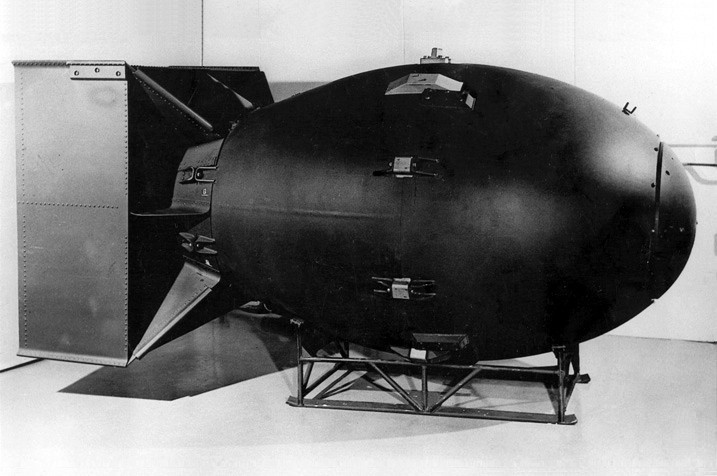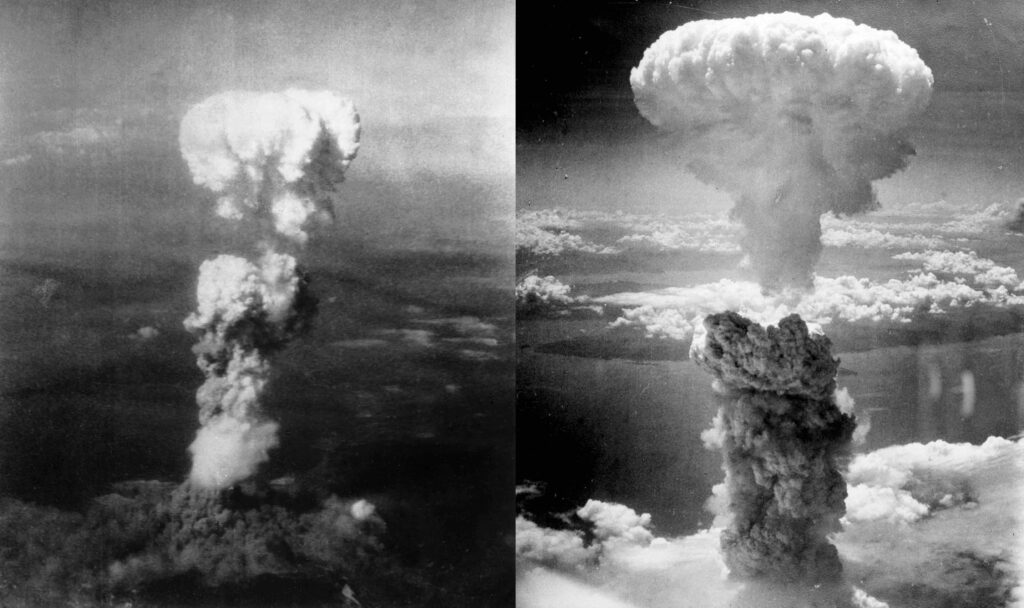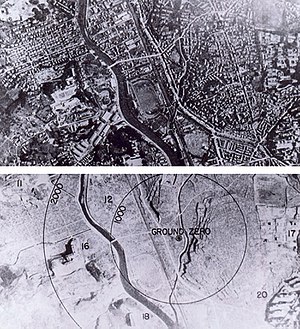Table of Contents
The atomic bombing of Hiroshima and Nagasaki by the United States remains one of the most popular and dreaded events in modern history. It was the first time when any nuclear weapon was unleashed on a country and its people. The bombings were carried out on the 6th and 9th of August 1945 on the Japanese cities of Hiroshima and Nagasaki respectively during World War II.
Japan’s no-surrender
The Allies had won the war in Europe when Germany surrendered in May 1945. Japan was not ready to surrender and swore to fight till the end. As part of the strategy, various cities of Japan were being bombarded continuously by the Allied forces but there was no major impact on the Japanese. There were casualties on both sides. Japan’s offensive against the Allied forces was blatant and unflinching. Though the Allies won the battle in Europe, the fight in the Pacific was still far from over.
Operation Matterhorn was a military operation consisting of the aerial strikes by the U.S. on the Japanese forces by B-29 Superfortresses.
The Manhattan Project
The world and especially the U.S. was shocked to learn about the nuclear research program that Germany had initiated even before World War II happened. Albert Einstein and other scientists warned the U.S. of the nuclear program and its impact.
Nuclear fission, which is the core process of the nuclear reaction, was discovered by German scientists – Otto Hahn and Fritz Strassmann.
The growing concern of the U.S. scientists led to the talks of initiating a nuclear program in the U.S. in late 1939. In 1940, the U.S. initiated its nuclear weapons program to be offensive-ready in case the need arose. The project was undertaken by the Office of Scientific Research and Development and the War Department.
The program gained momentum when it was discovered that few kilograms of uranium-235 were needed to create an atomic bomb instead of tons of natural uranium. The U.S. Army Corps of Engineers was vested with the responsibility of creating facilities for the development of the nuclear weapon(s). The project was code-named “The Manhattan Project”.
The Manhattan Project was merged with the nuclear projects of the U.K, Tube Alloys, and that of Canada, the Montreal Laboratory.
Creation and testing of Atomic Bombs
Over the next few years, the project scientists worked on creating nuclear elements – uranium-235 and plutonium-239. In Los Alamos, New Mexico, a team led by J.Robert Oppenheimer was given the responsibility of creating atomic bombs from the two nuclear materials.
The successful testing of the plutonium-based atomic bomb was conducted on July 16, 1945, at the Trinity test site at Alamogordo, New Mexico.
The successful creation of the atomic bomb paved the way for the U.S. to be known as a nuclear superpower. At the time of its creation, there was no intention of using the atomic bomb against any country. The U.S. however became war-ready and had leverage.
The Quebec Agreement of 1943 between the United States and the United Kingdom stated that any nuclear weapon developed by either or both the nations will not be used by either country without mutual consent.
Potsdam Declaration
The Potsdam declaration was the statement that outlined the terms of surrender of the Japanese armed forces in World War II. The United States President – Harry S. Truman, the President of China – Chiang Kai-shek, and the Prime Minister of the United Kingdom – Winston Churchill agreed to and signed the statement at the Potsdam conference.
The blatant statement stated that if Japan didn’t surrender, it would face “prompt and utter destruction”. There was no mention of the atomic bomb in the declaration though.
Need for the Atomic Bomb
The top military commanders of the U.S. were continuously in favor of the conventional aerial strikes on Japan. In the coming days, the strikes were to be followed by Operation Downfall which was supposed to be a massive invasion of Japan by the Allied forces.
The invasion though had its repercussions. It was predicted that such an invasion could lead to 1 million U.S. casualties. The President of the U.S., Harry S. Truman after talks with the Secretary of War, few top military commanders, and the scientists of the Manhattan Project was convinced that a nuclear bombing would severely cripple Japan and bring the war to an immediate end.
The U.S. never aimed to target Japanese civilians. They chalked out the plan to attack the major cities of Japan with military and industrial importance.
Some experts say that the plan for the atomic bombing of Japanese cities was not only restricted to ending the war but was also aimed at creating a dominating image of the U.S. in the world.
Little Boy and Fat Man
Little Boy was the name given to the over 9,000-pound uranium-235-based atomic bomb that was used in Hiroshima’s bombing.
Fat Man was the name given to the 10,000-pound plutonium-based atomic bomb that was used in Nagasaki’s bombing.

Courtesy – Wikipedia
The Fat Man was more efficient and powerful than Little Boy.
The warning before the bombing of Hiroshima and Nagasaki
The U.S. warned Japanese civilians before any aerial strike by dropping warning leaflets. The aerial strikes destroyed many cities almost completely and Japanese civilians deserted major cities where strikes were expected.
In the case of the bombing of Hiroshima, it is said that there was no intimation of the dropping of the atomic bomb because it was not known if the bomb would successfully detonate or not. Plus, a surprise attack would create a deeper impact on the Japanese leadership.
As per other sources, it is said that the warning leaflets were dropped days before the atomic bombing of Hiroshima, but whether the information of the atomic bomb was part of the leaflets is unknown.
Atomic bombing of Hiroshima and Nagasaki
Hiroshima
On 6th August 1945, a B-29 Superfortress bomber by the name of Enola Gay took off from North Field, Tinian with Little Boy that contained almost 64 Kgs of uranium-235.
Enola Gay was the name of the mother of Colonel Paul W. Tibbets who carried the Little Boy atomic bomb to be dropped over Hiroshima.
The Little Boy was released at 08:15 (Hiroshima time). It took around 44 seconds for the atomic bomb to detonate.
The atomic bomb Little Boy detonated at a height of about 1900 feet over the city of Hiroshima.
As per the reports, the bomb detonated above Shima Surgical Clinic. The detonation released an energy equivalent to 12-15 kilotons of TNT with only 1.7% of the material fissioning. The immediate destruction spanned to a radius of 1.6 km, while the resulting fire spread across five square miles.
The survivors say that they saw a bright flash of light and a big cloud followed by a loud booming sound. The instant casualties were said to be around 70,000 – 80,000 with almost 70,000 injured. Many Japanese troops were killed and most of the city buildings were destroyed completely.
Hiroshima was considered to be an important military base and industrial port for the Japanese. By attacking the city, the U.S. not only wanted to cripple the city but also paralyze a part of the Japanese military.
Nagasaki
Even after the bombing of Hiroshima, the Japanese did not surrender considering they can still battle it out. The U.S. decided to move ahead with the second bombing.
The next target on the list was Kokura which had Japan’s largest munitions plants. However, due to bad weather conditions, the secondary target, Nagasaki was chosen for the bombing.
Nagasaki had a major military port, Japan’s largest shipbuilding and repair center, and was a major producer of naval weapons.
Major Charles Sweeney flew with the plutonium-based Fat Man on his B-29 aircraft named Bockscar from Tinian.
At 11:02 (Nagasaki time), Fat Man with 5 kg of plutonium was released over Nagasaki. The bomb exploded at around 1650 feet over the city. Though the bomb was more powerful and efficient than Little Boy, it exploded in the Urakami Valley that confined the blast impact. The detonation released an energy equivalent to 22 kilotons of TNT, but due to the topography, the destruction covered an area of only 2.6 square miles when compared with Little Boy.
Some reports stated that 35,000-40,000 people died in the bombing while the other reports stated that the number was much higher i.e. close to 60,000-80,000. Apart, around 60,000 people were injured in the attack.

Courtesy – Wikipedia
Japanese surrender post the bombing of Hiroshima and Nagasaki
On August 15, 1945, the Japanese emperor Hirohito declared Japan’s surrender to the Allies because there was no other alternative left. Though some top Japanese officials were still in favor of continuing the war, the emperor was against it. The only condition that he put forward before the surrender was that the Allies would not declare anything that would jeopardize the sovereignty of the emperor and that the imperial identity will remain intact. The condition was obliged.
Japan signed the instrument of surrender on September 2, 1945, thus ending the war.
Conclusion
Rough estimates state that almost 60,000-80,000 people died in Nagasaki and 70,000-135,000 people died in Hiroshima from the bombings. The exact numbers are still unknown. The statistics of the number of people that died from the blast and those that died because of the radiation are also not known accurately.

Courtesy – Wikipedia
For years after the bombing, many people lived crippled life due to radiation exposure. The babies were born with defects because of the events and many people developed cancer in years to come. The bombarded cities and Japan were never the same after the war.
Hiroshima and Nagasaki’s atomic bombing remains a turning point in history even though it took away many lives. Some experts say that it is a big blot as a nuclear weapon should never have been used. Nevertheless, the whole event made the U.S. one of the most dominating forces in the world.
Check out our related poem – Radioactive: A Hope
CURATED & WRITTEN BY
AYUSH PANDYA
(AUTHOR – THE UNPRECEDENTED CULT)